
Joy Askew
Designing Angles
by Anil Prasad
Copyright © 2004 Anil Prasad.
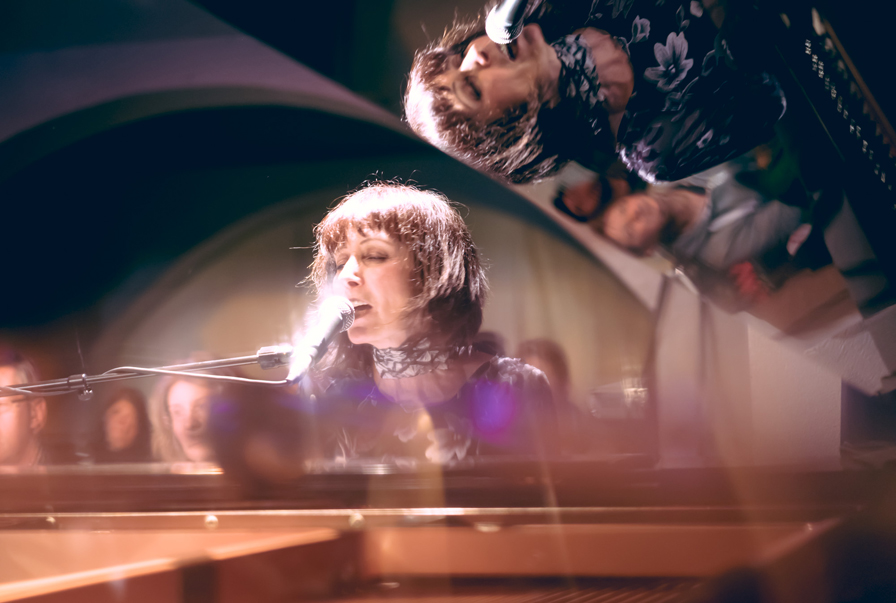
Singer-songwriter, composer, arranger and sideperson to the stars are just a few of the ways the multitalented Joy Askew has been described. With the debut of her new group Echo, you can add sonic sculptor to that list.
Echo is a partnership between Askew and trumpeter/keyboardist Takuya Nakamura. The New York City-based musicians engage in a jazz-meets-electronica approach inspired by Miles Davis' late '60s pioneering fusion era. The duo chose to forego conventional songwriting methods and worked primarily on samplers and Digital Performer software. Contributions from guitarist Mark Wood and drummer JoJo Mayer were peppered into the mix along the way.
Echo's eponymous release focuses on deconstructed and reinvented standards such as "I've Got You Under My Skin," "Love for Sale" and "The Girl from Ipanema." The album often finds Askew approaching her vocals in a textural capacity. In fact, Echo constructed its music from the ground up using Askew's voice as a core building block.
Prior to Echo, Askew, a British ex-pat, released several solo records, including 1996's Tender City, an outstanding collection of diverse, meticulously-crafted songs, featuring contributions from Peter Gabriel, Larry Klein and Jerry Marotta; 1998's When, her first foray into film soundtrack work; and 2000's The Same Desperado, featuring collaborations with emerging bass giant Matt Garrison and drummer Bill Dobrow.
In addition to her solo career, Askew is well known for her sideperson exploits which include stints with Laurie Anderson, Rodney Crowell, Peter Gabriel and Joe Jackson. Quincy Jones recently took a shine to Askew's work as well. Echo is currently working on a track for his upcoming remix album.
Askew met with Innerviews over a vegetarian brunch at San Francisco's Herbivore restaurant during Echo's last Bay Area stop. We began our conversation by exploring the roots of her new musical direction.
Tell me about the beginnings of Echo.
Echo began when I met Takuya Nakamura after I saw him play at a Tuesday night session that was happening in New York City about three years ago. It was a kind of drum and bass thing called Prohibited Beats that took place every week and it was pretty exciting. I was very attracted to what Tak was doing because he was playing trumpet, keyboards and electronics, but it was all improvised. I felt like what he did was finally the extension of the electric era of Miles Davis. After the Bitches Brew, Live Evil and On the Corner era, that thing never really continued. It veered off into uninteresting fusion music and then jazz kind of came back as young guys in suits trying to be John Coltrane or something. Apart from Weather Report, I couldn't really find an extension. But when I listened to what Takuya and JoJo Mayer were doing, I felt like that's what it was.
Describe the journey from that initial meeting to making the record.
I asked Tak if he would work with me and he said “Yeah.” We initially started on some songs I had. He was putting electronic beats in the songs and it was okay, but it was still very song-based, which is where I came from before. I still had the idea in my mind that it was going to be something more, done in an improvised way. One day, he came over and both of us were working with our samplers and Digital Performer software. We each had different samplers. He programmed a jungle rhythm into his sampler and played it for me and I loved it. As he started playing it for me, I just started singing “I’ve Got You Under My Skin.” I don’t know why, but I did. Then I pulled out an old Cole Porter book I had so I could get the words right. [laughs] I tried to get through the whole thing by singing what I thought was the melody. I succeeded in getting all the way to the end and we looked at each other and said “That is fantastic.” We totally reharmonized and reconstructed a standard in five minutes. Twenty minutes later, the track was recorded. It was totally spontaneous.
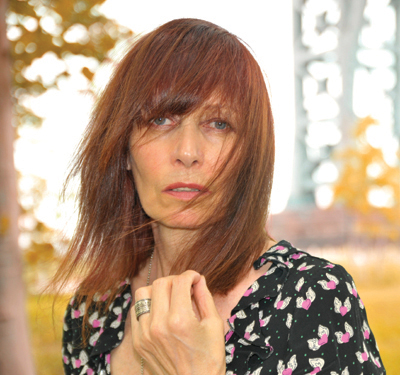
So, you didn’t specifically conceive this project as something that delivers standards to a new generation?
Absolutely not. At one point we said “this is a great concept,” but it wasn’t until we were finished doing that song. That’s the track that made it on the CD. When we went to mix it, we added some guitars at the end that I played, but other than that, it was already complete. So, there was nothing preconceived. It was about the best collaboration I’ve ever had with anyone because Takuya, up until that point, had only been working in instrumental music. We have some common ground in terms of jazz. He was originally a jazz musician and we’ve listened to all the same kinds of things. Previously, when I’ve collaborated with people, it wasn’t jazz musicians. It was rock musicians or singer-songwriters. With Takuya, I can bring in the Miles Davis and Weather Report element into what I do.
Takuya and I both work on Digital Performer. As far as I’m concerned, Digital Performer and ProTools are now instruments. Takuya is very good with this stuff. I’m not, but I’ve been playing for 35 years, so I can get around it fast. I know what I’m looking at. I think the worst creative stopper is when people get caught up in technology. When I’m in my studio, what I need to do is be able to walk in, turn it on and create. I don’t need the best or the newest stuff. I don’t need fancy-fangled anything. I need to be able to create and that’s exactly the same for Tak. We’re not techheads at all, but we have enough stuff to make things work. When we created the Echo record, we had different samplers with different properties. His sampler represented his sonic life and my sampler represented mine. We pushed them together.
It’s a very focused record and one that feels like it was designed to generate a big splash.
That’s what I felt too. After we did “I’ve Got You Under My Skin,” I very quickly put two and two together and thought “These are very well known songs, but with a major twist. The record is going to get a total reaction.” After doing The Same Desperado and getting nowhere in terms of getting attention to be able to get funding for my records, it seemed to me the only thing that happens these days is a designed angle. Everybody out there is very calculated. I can’t calculate musically. I’m not into that. So, I thought I’d calculate conceptually because that’s not a compromise. It’s fine. It’s kind of nice actually. I definitely presented people with a box in that the record was going to be entirely made up of standards. But then we wrote “Secret Self” and loved it so much that we decided to put a few more originals on.
Your vocal approach on the Echo record is very different from your previous albums.
Yeah, I agree that it is on some of those tracks. It’s because I was going for a different sonic concept. When I started singing “I’ve Got You Under My Skin,” it just felt like if I sang it in a more vulnerable way that it would work, as opposed to singing it strong. I was basically singing a texture instead of singing a song. The whole backing for it was a texture too. We went into a different territory to completely reinvent the whole thing. Once I did “Skin,” that formed the approach.
I understand “Secret Self” derives from your interest in Beat poets.
I was reading a couple of compilations and I also had just seen a documentary called The Source which is about the Beat generation. It inspired me incredibly. “Secret Self” is made up of a loop that I took from the first track on Tender City. It’s actually one of my own things. I slowed it down, took out the middle and reversed a bit of it and created this whole other thing and that’s what the track is made out of. While Takuya was putting drums on it, I just sat down with a Beat book and flipped through the pages and read whole sections aloud. I got some ideas and wrote those verses. It’s kind of set in the late ‘50s or early ‘60s in the East Village. I was trying to evoke that period.
Did you get to work with William Burroughs during the filming of Laurie Anderson’s Home of the Brave?
No. When he came to the set, most people weren’t allowed to be there. Laurie explained to me that the set had to be closed because he was a bit weird. He was a misogynist and didn’t want any women around. But he’s great on the record. His voice is fantastic.
How did you hook up with Laurie Anderson for the Mister Heartbreak tour and the film?
That experience is one of the most fantastic I’ve had in my creative life. I really love Laurie. I hadn’t been in the States very long when that happened. I had finished up a Joe Jackson tour and was living in New York just under a year. I was trying to get a record deal and nothing was happening. I was running out of money extremely fast. Suddenly, I got three calls from different people who said they had recommended me to Laurie Anderson. So, I got the call to go down and visit her. I had heard about “O Superman,” the big hit she had, but that’s all I knew about her. So, someone lent me the record and then I went down to her place. She lived on Canal Street in a loft. I went in and it was great. She was so peculiar, but so nice.
Laurie started playing me all this stuff from her new record Mister Heartbreak. We spent quite a few hours together. Then, they called me the next day and said “We want you to do the tour. Will you do it?” So, I started working with her and her sound engineer who was a girl named Leanne Ungar, who I’m still friends with. I liked that about Laurie. She had a totally varied operation. Female sound engineers were not the usual, run-of-the-mill thing.
For many years, I was so into the Miles Davis Jack Johnson and Bitches Brew era. When I think about that music, I look at it as someone getting inspired by drawing two lines and then filling that space with creativity, as opposed to a structure. So many people in music go for a structure like the verse, the chorus and the bridge. We work in three dimensions, but it could be five dimensions if we wanted it to be. When I started getting into rehearsals with Laurie, she said “This first song is done through a loop of frogs.” I thought that was so incredible, because she was so technologically advanced, yet so creative. This was 1984. It was a real example of the Miles thing I was talking about. The frogs existed before and they exist afterwards, but we’re going to draw a line here and a line there and do the song in between. So, I realized she had that concept. Laurie was picking sounds from infinity and just using them. I totally dug it.
Laurie was working at a whole other level. She was using multimedia which was very different in those days. We were using an actual screen and there was a guy up on the balcony with an actual camera reel. This was reel-to-reel, not video. It was quite intense. She was using a Synclavier and it was breaking down every day. I didn’t even have MIDI keyboards. I had three keyboards that were separate because it was pre-MIDI days.
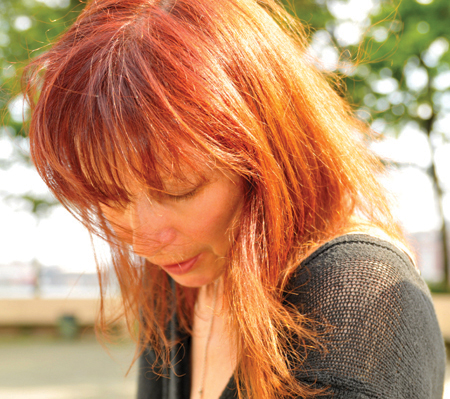
You play a very significant musical and visual role in Home of the Brave. How do you look back at your contributions to it?
With one regret. While we were doing the tour, Laurie developed this thing where she would call me up on the telephone. During the tour, she was stage left at the front of the stage with her keyboard rig and I was stage right front. Everyone else was ‘round in a semi-circle. When they left the stage and we called each other up on the phone, it was going across the front and looked very good because it was two people on the phone and they were opposite one another.
When Laurie would call me on the phone, it would come through the speakers. One night, I think it was New York, I was having a lot of difficulty with one of my keyboards. It was completely broken, yet I knew I had this telephone and monologue sequence from her coming up which was about eight minutes. But I already had the two roadie guys out and they were down below trying out new cables. Then the phone rang. I picked it up and said “I don’t have time to talk to you right now. I’m busy.” Then I put the phone down. [laughs] The audience just killed themselves laughing and her jaw dropped open. In other words, I was completely real in the moment and it worked incredibly well. Afterwards, she said “That was just so fantastic.” I wasn’t acting. I was in a total panic. So, when it came time to do the movie, she originally wanted to do that but didn’t. I wish we could have captured that.
I love the film for its color. I think Laurie has a deep sense of color. The film is transporting. If I didn’t know anything about her and saw the movie, I’d be blown away by it. Technology has advanced incredibly since the film, but I think the film is a classic because it truly represents what one could do at that point in time. I don’t think it would be any better with what we could do now. I love the way she moves and those Howling Wolf sequences she did on her violin. Those are high spots. The editing is very exciting too. I’m very critical of my presence because the way I look is so bizarre. It’s almost embarrassing. They did me up with this huge hairdo, but that was fun. I look so ‘80s that it’s unbelievable. [laughs]
Given the magnitude of musicians you’ve worked with and the critical acclaim you’ve received, why do you think getting attention for your solo career has proven so challenging?
If I knew the answer to that, I would have been able to do something about it.
Any theories?
None. I did get a record deal in ’95, but that was after 13 years of trying. I’ve had some great experiences that are rather funny. In ’92, I was touring with Rodney Crowell, who is based out of Nashville and was signed to Sony. It was a good, fun band full of really good players. It was kind of country rock. When the tour got to New York City, I didn’t know it, but Tommy Mottola was in the audience. He was the head of Sony. Being in my hometown and having been on tour for five months, we were really good. Rodney featured me in an incredible way. I’m not a very good sideperson, I’m a frontperson. So, he had me come down front to sing and I was playing lots of organ, which was a dream if you like to play that stuff, which I do.
At the end of the night, this guy walked up to me, put his hand on my shoulder in front of everyone and said “I’m Tommy Mottola. What do you want? I’ll give it to you. You’re fantastic.” So, that was amazing. They gave me a pretty big budget for a demo to do three tracks, which I did. When I was in the studio doing the tracks, the A&R man was digging them and said they were going well. While we were mixing, I got a call about Peter Gabriel being interested in working with me. So, I hurried and mixed the tracks and sent them to Peter because he needed to hear some stuff. I sent him lots of other stuff too, but one of the new tracks was at the top of the list. Pretty soon afterwards, I got a call from him in Africa. He didn’t even wait to get home. He left a message on my machine saying he loved the music and that particular track from the Sony demo. He said “I really want to work with you and maybe we can write together.” So, he was obviously bowled over by it. He said “I’m flying over to see you.” So, that happened. He flew over and I got the gig and went off and worked with him, but I never heard from Sony! So, I’m calling them every day because I got the Peter Gabriel gig which was a massive world tour with about the most promotion you could ever expect to get. So, in other words, if Sony did a record with me, it would be handed to them on a plate with all of this extra promotion. But I never heard back from them.
After I came off the tour with Peter, I called and called and called and said “I demand to know why you never called me back.” The A&R man said “I was too embarrassed.” I said “Why?” He said “Because I played the tracks to Tommy Mottola and he said something to the effect of ‘Oh God, she really can’t write. She’s dreadful. Maybe we can get Michael Bolton to write some songs for her.’” I thought that was interesting to hear after Peter Gabriel couldn’t even wait to get home and calls me from Africa to say “I love your writing so much and want to work with you.”
I’m still friends with Peter. I taught his daughters Anna and Melanie, and now Melanie is singing with him on tour. I’m very proud of that. I think he’s very pleased. It’s the best thing that could have happened. Melanie studied with me for two years. While on tour, Melanie called me and asked “How should I do this?” It’s wonderful to be involved in the right way, because I’m not a sideperson, but I can give a lot of advice about singing the songs because I had to do it. I think Melanie’s voice is great. It’s really lovely. It wasn’t an easy thing for her to be a singer. Some daughters of famous people get right into it while others are put off by the celebrity of their parents.
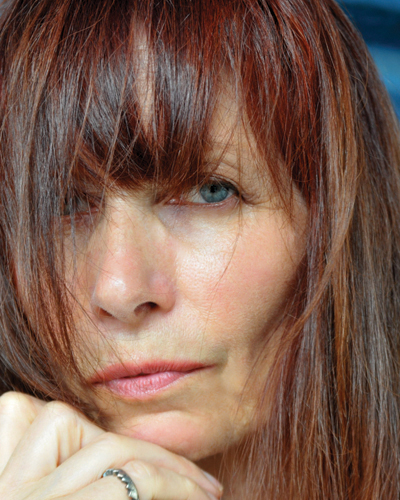
You also worked with Melanie Gabriel on the Refuge CD, a benefit album for Kosovo refugees.
That was a nice project. Melanie brought in her poetry and it kind of happened organically. I think she’s really talented. She said “Dad’s got this track” and played this stuff and I said “That’s great, let’s use it.” That’s how the collaborative track came together. I was a producer on that album along with a couple of other people. I got asked to do it and thought it was a good cause. I knew I could do it and had the ability to call up people and get them on the record. It was a good experience.
Let’s go through each of your solo albums and have you tell me whatever comes to mind. Let’s begin with From Kyoto to Hollywood. (1987)
That record means a lot to me because at least it got me going. I had a band and finally said “I can’t get a record deal, so I’m going to make my own record” and that’s what I did. I like the track “Urban Life,” but other than that, I’d never want anyone to listen to it. [laughs]
Next up is Tender City. (1996)
Tender City means a lot to me and I’m still proud of it. I think the most important thing about it is that I did wait an awfully long time to get a record deal. I do feel I was ready at that point. I like all the songs on it. I’m very proud of “Little Darling.” Bonnie Raitt recorded that song as well as “Cool Water,” but she didn’t put them on an album unfortunately. She loves “Little Darling.” I love “Cool Water” and that’s in Baywatch in syndication forever and ever which is really cool and hysterical. [laughs] I also love “This Ring” which is about my grandmother’s wedding ring. I also like the fact that Peter [Gabriel] sang on it. There are some great musicians on it too. Larry Klein, Greg Leisz and Jerry Marotta play on it.
Let’s move on to Gorgeous Creature. (1997)
Gorgeous Creature was a CD of demos. A couple of the tracks were mixed properly, but the rest I mixed myself. I brought that out because I got on the Lilith Fair tour and needed some new product beyond Tender City. It’s pretty incomplete, but I like the song “The Voice.” I like the other songs too, but as a record it’s not stellar because most of it isn’t developed beyond the demo stage.
Larry Fast assisted you in releasing Gorgeous Creature. Tell me about your association with him.
Larry met me on the Peter Gabriel tour. He came down and we met backstage. When I got home, he called me up and said “When I saw you on Saturday Night Live with Peter, I felt that Peter had finally found the right person to work with.” Larry is a good friend and offered to help get Gorgeous Creature out there. He mastered it for me and gave me a barcode. Larry’s great. I feel very honored that he’s my friend. He’s such an original guy. He’s one of the pioneering electronic guys.
That brings us up to the When soundtrack. (1998)
I got asked to do the music for that movie and it was very interesting. The song “When” I absolutely love because I had taken up the guitar about six months earlier. It was a brand new instrument to me. I decided to start writing on it because after playing keyboard for 40 years, there are no surprises anymore. I got stuck in that “no surprise” place, but on guitar, everything was a surprise. I had no idea where I was going really, so I wrote the title track “When” and it’s a very different song for me. I was so into the harmonics and the sequence I came up with. I then went over to the piano and worked it out and I was like “Wow, I would never have written that on a keyboard in a million years.”
“When” is one of the more aggressive pieces you’ve recorded.
Yeah, it gets loud. [laughs] I started off as a rock singer. Janice Joplin was everything to me. It’s not alien for me to sing flat out rock all night. This might be another answer to your question about why record labels aren’t interested in me. Because of the time I grew up in and also coming from the musician angle, I have such a wide variety of influences and that’s not good for record labels because they can’t put the finger on you. I know a lot of singers that can’t sing flat out rock or screaming soul. I’ve spent years doing that in some of the bands I’ve been in. One of the first bands I was in was an all-female group called Bitch. I was the lead singer. It was pre-punk, but fucked-out rock.
The movie When never came out, which is a shame. I scored the whole film. Larry [Fast] helped me master the soundtrack, but the movie wasn’t good and didn’t get any backing. I didn’t want to let the songs go. I made them into a record myself and that’s why it’s called “a bootleg.” I didn’t have much funding to do much beyond what I did.
Last up is The Same Desperado. (2000)
Back in ’99, I got asked to take part in a series of tribute evenings at a place called The Living Room in New York. It’s a small, singer-songwriter club that has little bands and a good vibe. They did evenings dedicated to Bob Dylan, Joni Mitchell, Elvis Costello and Van Morrison and would ask a lot of local people, up to 25 some nights, to do one or two songs each. These were amazing evenings because the place only holds 40 people, but there would be like 80 people crammed into this place and out on the sidewalk.
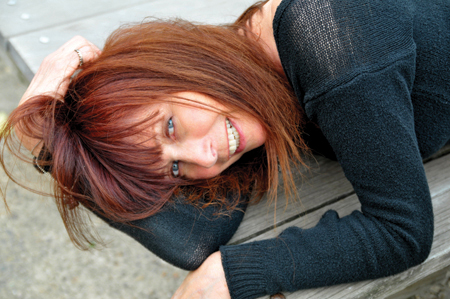
They invited me to do the Joni Mitchell night and asked me to do one song and then finish the evening with “Woodstock.” I did that and a guy approached me and said “You know, I’m doing this thing for Central Park Summer Stage. It’s a Joni Mitchell tribute concert. Would you like to do it?” I said “Yeah.” They had artists like Chaka Khan, Duncan Sheik, Jane Siberry and Toshi Reagon. It was really eclectic. A friend of mine, Vernon Reid, was the bandleader and asked me to get the background vocals together for the show and also to play a little in the band, do two songs and also play with Joe Jackson. So, Joe and I did a long piece together.
At the same time, I was definitely looking to do something else and that’s when I started going down to these late night jam sessions. Karsh Kale was there, Takuya was there and so was Matt Garrison. I saw Matt and got up and jammed and we talked afterwards and swapped cards. I thought he was incredible. The guy who had approached me about the Joni Mitchell thing wanted some ideas for the band and I said you’ve got to get Matt on bass because he can really do the Jaco thing and that’s the era we focused on for the show. It was called Joni’s Jazz. So, sure enough he saw him and we got Matt. It was a very intense project. We rehearsed over four days and did the show. Joni came out to see it. It was just the most incredible event. We did something like 25 songs.
Matt and I totally connected after that. I called him and said “I’ve got these songs and I really think I would like this approach.” He came over to my house a few times and we just sat and played them. We decided to start a band with a drummer named Bill Dobrow who is more of a rock guy. Bill has been playing with Rich Robinson from the Black Crowes and that’s more his vibe. I kind of smashed them together. They had never met before and would have never normally played together. If I had got a jazz drummer or a singer-songwriter drummer, things would have gone in a limp direction. I had to have the edge in there. Matt and Bill are the same age and it worked in a crazy way. We did a couple of trio gigs that were so electric and alive with a special energy, but it didn’t last long. After we recorded The Same Desperado, I met Takuya and realized that’s the direction I wanted to go in. Some samples of Matt are on the Echo record. I took a couple of bits and turned them around and did some stuff with it. Takuya has done some gigs with Matt. We’re all still in touch.
How do you feel you’ve evolved as a songwriter during the last 15 years?
Incredibly. I’ve changed enormously. I don’t think I really was a songwriter 15 years ago. I think it all started around 1990. Everybody I’ve worked with since then has helped give me ideas and shape stuff. Working with people like Laurie Anderson, Rodney Crowell and Peter [Gabriel] really helped hone things. The most important thing is to stay moving. I don’t ever want to get comfortable in any way. Other people may have a different opinion, but I feel that music has gone past a line and we’re into a very different way of making music now. It’s a generational thing, but it’s also to do with technology. When guys get together with guitars, drums and bass in a room, it’s nice, but an old way of doing things. There’s nothing wrong with it and I can totally dig it, but there’s a new way of looking at stuff today. I’m in that space and I don’t want to go back.